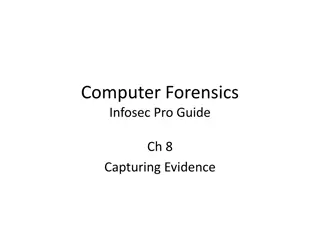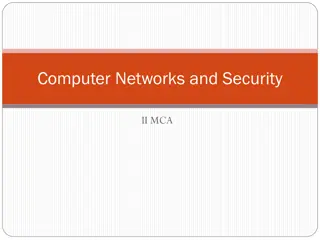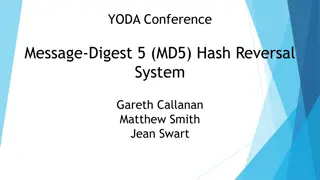
Understanding MD5 Hash Algorithm for Secure Message Digests
Dive into the world of MD5 hash algorithm, its principles, working mechanism, and historical evolution. Learn how MD5 generates fixed-length output for secure message compression.
Download Presentation

Please find below an Image/Link to download the presentation.
The content on the website is provided AS IS for your information and personal use only. It may not be sold, licensed, or shared on other websites without obtaining consent from the author. If you encounter any issues during the download, it is possible that the publisher has removed the file from their server.
You are allowed to download the files provided on this website for personal or commercial use, subject to the condition that they are used lawfully. All files are the property of their respective owners.
The content on the website is provided AS IS for your information and personal use only. It may not be sold, licensed, or shared on other websites without obtaining consent from the author.
E N D
Presentation Transcript
MD5 A Hash Algorithm
Hash Function Message Length => Hash Function=> Hash value{size<Msize}. I/P Message 10 12 14 16 4 bit O/P Features: Fixed length o/p Compression Fuction Digest Message
Hash Function M=>H[Easy]; H=>M[Hard]{it s easy to M to H; but hard to H to M M=> H ..M=>H{same hash value for same message every time} M1=>H1 ; M2=>H2; H1not Equal to H2
Why HASH? Fingerprint of message does not tell anything about the message. This is because there are infinite other possible equations which can produce same result.
Principle Of MD Developed by Ron Rivest Easy to Compute Fast and produces 128 bit message digest Same message same MD Difficult to reverse Different message different MD
History Series of MD algorithm. Original message digest algorithm called as MD. MD2 (1989) for 8 bit PC, rounds18 found to be quite weak. MD3 was failure never released. MD4 (1990) digest length128 bits rounds 3, found to wanting. MD5 (1992) we will discuss it in details. MD6 (2008) variable digest size up to 512 bits & rounds.
How MD5 Works? Digest Length=128 bit I/P Text=512 bit Sub Block size-32bit 512/32=16 total Sub blocks No. Of Rounds=4 Iteration per round=16 Chaining Variable = 4*32=128 K[t] constant = Where t=0 to 63 O/P-> four 32 bit blocks
Steps 1. Padding Original message+ Padding 2. Append length Original Message mod264 3 Divide the I/P in 512 bit blocks 4 Initialize chaining variables 5 Process blocks 6 Copying chaining variables into temporary var. 7 Sub blocks within a block 8 i/p to round temp var,16 bit sub block ,constant [t]
Initialize chaining variables Copy four chaining variables into corresponding variables i.e. {A=a ; B=b ; C=c ; D=d} A = 01234567 B = 89ABCDEF C = FEDCBA98 D = 76543210
After all the 512 bit blocks have been processed a 128 bit message digest is produced, which is a function of all the bits of your message. The operations of the Functions F, G, H, I can be expressed by the following diagram:
Understanding The Process P where g can be expressed as: ROUND 1: (b AND c) OR (b`AND d) ROUND 2: (b AND d) OR (c AND d`) ROUND 3: b XOR c XOR d ROUND 4: c XOR (b OR d`)
MD5 v/s MD4 Point of discussion MD4 MD5 Number of Rounds 3 4 Use of Additive Constant t Same for all the iteration Different for all the iteration Process P Less Random More Random Security Less More





